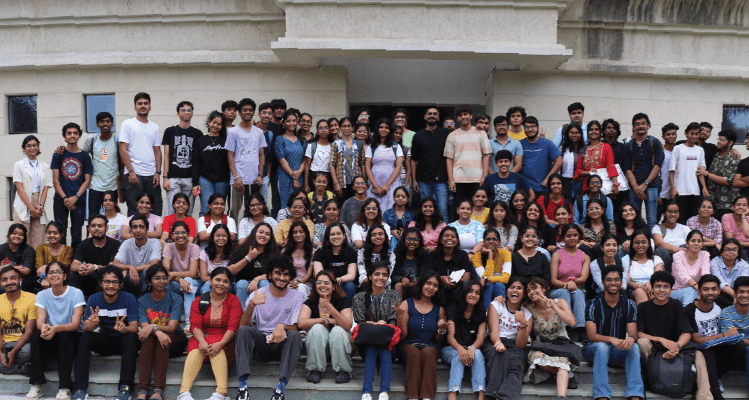Animation has evolved tremendously over the years, captivating audiences of all ages. Behind the seamless animation we see on the screen lies a complex and fascinating production process. Animation, has now become a versatile communication tool, has existed since the 20th century. Walt Disney and Max Fleischer were the first to lay the foundation for animation. Later the advent of computer technology added to the existing animation production process, leading to the rise of computer-generated imagery (CGI) and 3D animation. Animation allows creators to convey complex ideas, emotions and concepts in a visually engaging manner, leaving a lasting impact on the audience. In this blog let us explore how this magical storytelling and stunning imagery happens. Read on to learn the impact and the animation process step by step that brings animated worlds to life.
Types of AnimationThe production process include different types of animation techniques, each with its own distinct style and purpose:
- Traditional Hand-drawn Animation is a classic method involving creating frame by hand
- 2D Animation uses digital tools to create two-dimensional characters and backgrounds.
- 3D Animation is a computer-generated model to produce realistic and dynamic visuals.
- Stop Motion Animation manipulates physical objects frame-by-frame to create movement.
- Motion Graphic incorporates animated elements into live-action footage or graphic design.
Animation Design is a captivating art form that has the power to bring stories, characters, and ideas to life. Behind the seamless motion and mesmerizing visuals of any animated work lies a carefully planned and meticulously executed pre production animation process. From understanding the scope to adding the final touch with a professional voiceover, each step plays a crucial role in crafting an animated masterpiece:
Understanding the Scope: This step involves defining the project's objectives, target audience, message, and expected outcomes. Clarifying the scope helps set the right direction for the entire production process.Animation Workflow: A well-structured animation workflow ensures that the entire production process runs smoothly. It involves planning and organizing the various stages, assigning responsibilities, and establishing timelines. A clear workflow streamlines collaboration among team members and facilitates efficient project management.
Budgets: It entails estimating the financial resources required for the project, including talent, technology, software, hardware, and other production-related expenses. A well-managed budget helps in making informed decisions and optimizing resources throughout the process.
Initial Video Consultation: In this stage, the production team meets with clients or stakeholders to discuss the project's goals, creative vision, and expectations. It is a collaborative process that ensures both parties are aligned on the project's direction from the outset.
Illustration: The illustration phase is where the visual elements of the animation begin to take shape. Character designs, background layouts, props, and visual style are developed during this stage. These illustrations lay the groundwork for the animation's visual aesthetics.
Script Writing and Concept Development: It is the backbone of any successful animation. During this phase, a well-crafted script is developed, defining the narrative, dialogue and character interactions.
Art Direction defines the look and feel of the animation as it involves establishing the visual style, color palettes, and mood to maintain consistency throughout the project.
Storyboard Development: Storyboarding is a crucial step where the script is translated into a series of visual frames. These frames serve as a blueprint for the animation, helping to plan and visualize the sequence of scenes and camera angles.
Animation: The heart of the production process, animation brings the characters and elements to life through movement and expression. Animators meticulously create frame-by-frame motion to give life and personality to the characters.
Professional Voiceover: Voiceovers add depth and emotion to the characters, enhancing the overall storytelling experience. Professional voice actors record the characters' dialogues, capturing the essence of their personalities.
In conclusion, the animation production process is a journey that demands a harmonious blend of creativity, collaboration, and technical expertise. Each step, from understanding the scope to the final touch of a professional voiceover, contributes to creating captivating animated works that resonate with audiences worldwide. Whether it's a feature film, a television show, or a short animation, the careful execution of these steps paves the way for breathtaking visual storytelling.
FAQsQ1: What are the career opportunities after completing an animation design course?
A1: After completing an animation design course, graduates can pursue careers in animation studios, film and television production, advertising agencies, video game development, and other creative industries.
Q2: Who are the best b des animation colleges in India, and how long does it take to complete the course?A2: The duration of a BDes animation course in India from the leading Avantika University typically ranges from three to four years.
Q3: What are the stages of animation production?A3: It includes pre production animation (concept development, storyboarding, character design), production (layout, animation, background design), and post-production (editing, sound design, special effects).
Q4: Can I specialize in a specific type of animation during the course?A4: Yes, many animation design courses offer specialization options, allowing students to focus on areas like 2D animation, 3D animation, stop-motion, or motion graphics.
Q5: Do animation design courses cover software training?A5: Yes, animation design courses often include training on popular animation software and tools used in the industry, such as Adobe After Effects, Autodesk Maya, or Toon Boom Harmony.
